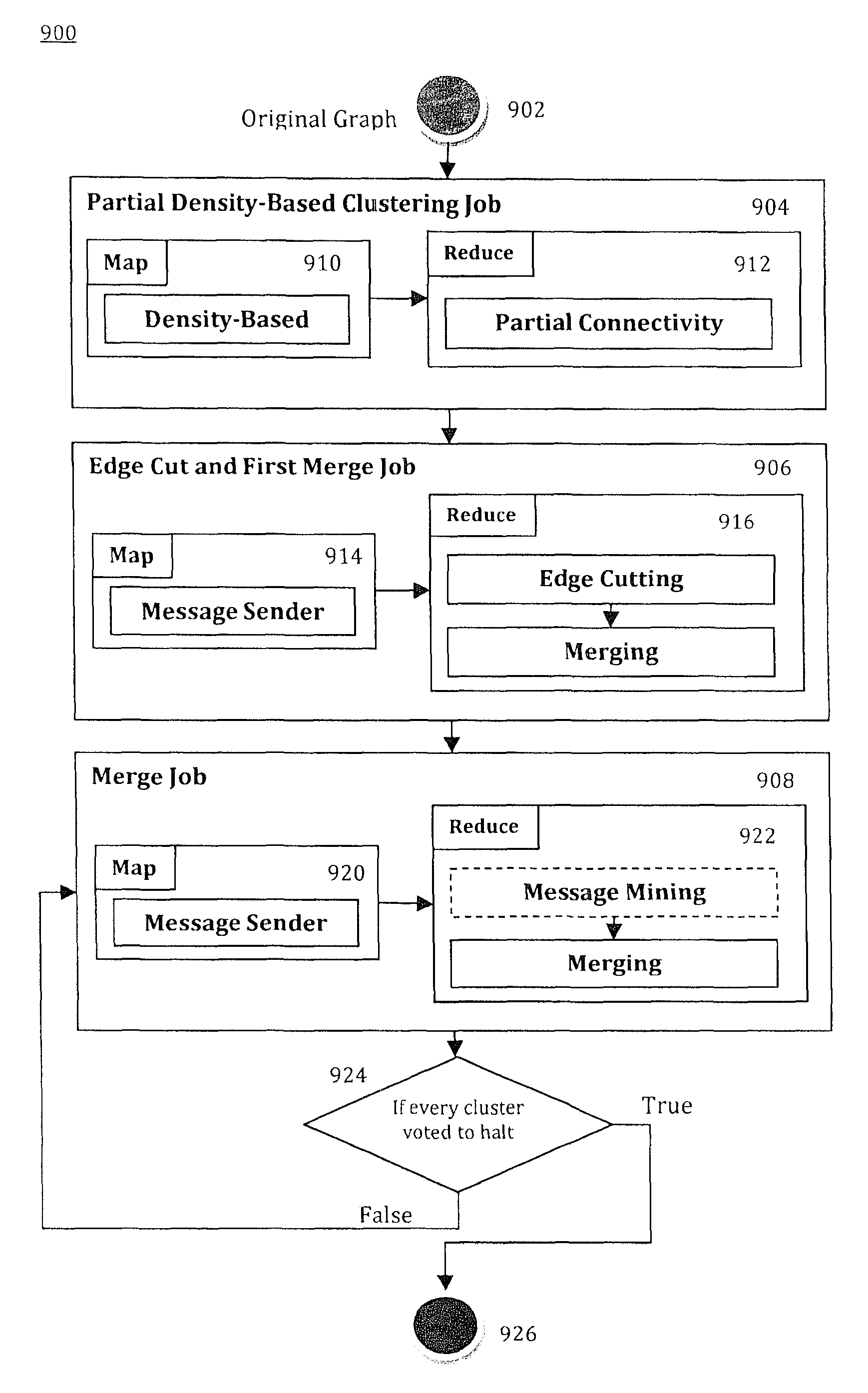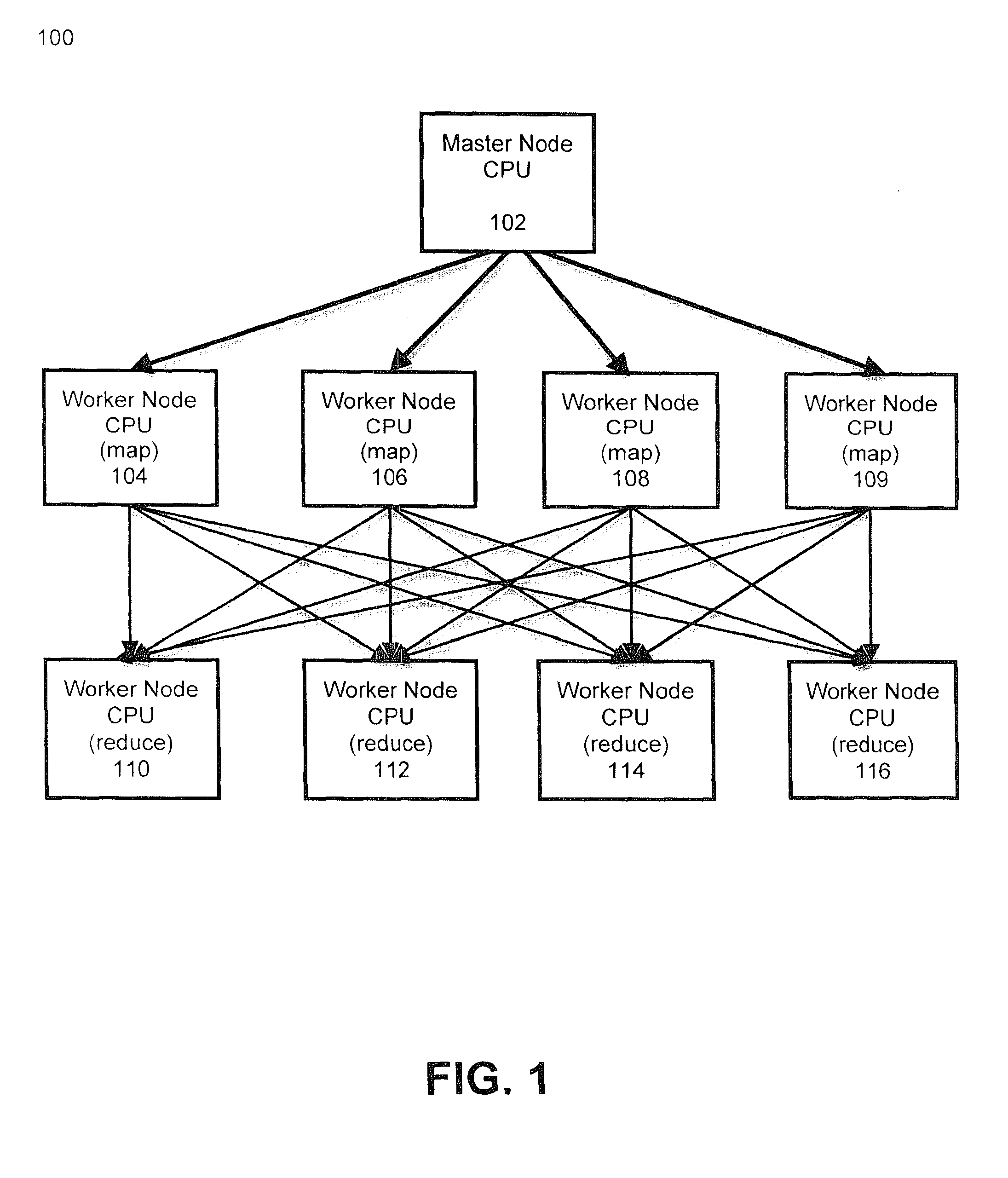Methods and systems for processing large graphs using density-based processes using map-reduce
a density-based process and graph processing technology, applied in the field of machine learning, can solve problems such as unaddressed embodiments, achieve the effects of improving the speed of result merging, facilitating its performance, and efficient solution on map-reduce platforms
- Summary
- Abstract
- Description
- Claims
- Application Information
AI Technical Summary
Benefits of technology
Problems solved by technology
Method used
Image
Examples
Embodiment Construction
[0025]Systems and methods are described for implementing the Map-Reduce framework through a density-based algorithm to solve large-scale graph problems. Aspects of the one or more embodiments described herein may be implemented on one or more computers executing software instructions. The computers may be networked in a client-server arrangement or similar distributed computer network, and one or more of the networked computers may execute application programs that require periodic testing to ensure continuing functionality.
[0026]FIG. 1 is a diagram of a computer network that implements embodiments of a density-based algorithm using Map-Reduce to solve large-scale graph problems. The system 100 of FIG. 1 implements a Map-Reduce model to solve large-scale graph problems. It also implements a reformulated version of the DBSCAN data clustering algorithm. Each node of system 100 represents a processor-based device or “machine” that may be embodied in a computer, workstation, server, cli...
PUM
 Login to View More
Login to View More Abstract
Description
Claims
Application Information
 Login to View More
Login to View More - R&D
- Intellectual Property
- Life Sciences
- Materials
- Tech Scout
- Unparalleled Data Quality
- Higher Quality Content
- 60% Fewer Hallucinations
Browse by: Latest US Patents, China's latest patents, Technical Efficacy Thesaurus, Application Domain, Technology Topic, Popular Technical Reports.
© 2025 PatSnap. All rights reserved.Legal|Privacy policy|Modern Slavery Act Transparency Statement|Sitemap|About US| Contact US: help@patsnap.com



